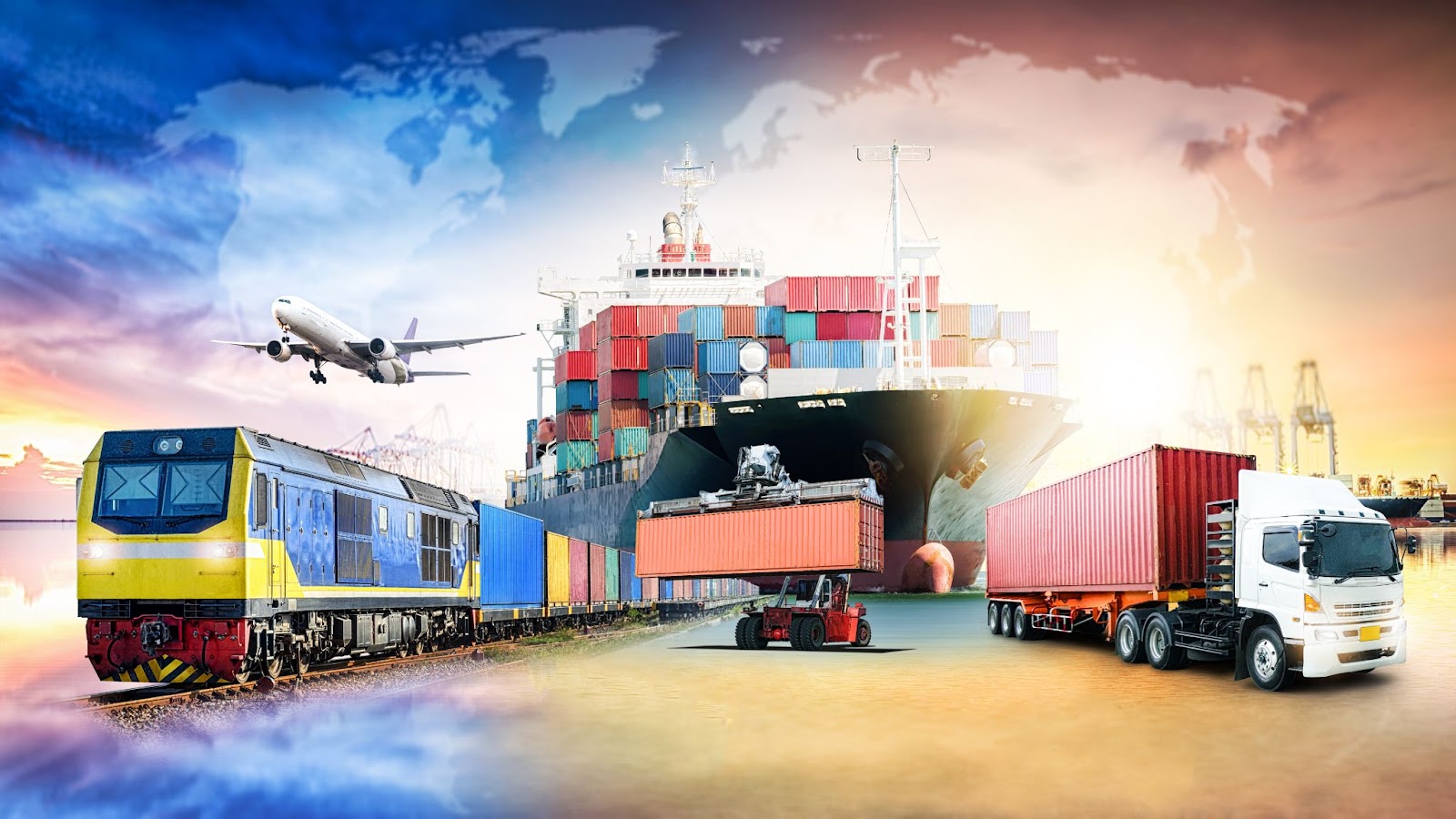Introduction
In today’s complex, fast-moving logistics landscape, visibility is more than a buzzword—it’s a competitive necessity. Supply chain disruptions, shifting customer expectations, and rising operational costs have made it clear: companies that can see clearly across their entire supply chain are the ones that respond faster, perform better, and build stronger customer trust.
That’s where end-to-end supply chain visibility comes in.
By connecting data across every phase—from raw materials to final delivery—end-to-end visibility empowers companies to operate smarter, leaner, and with greater resilience.
In 2024 alone, companies have faced a wave of logistics shocks—from port congestion in the Red Sea and labor strikes in Europe to cyberattacks on critical transportation software. At the same time, customers now expect Amazon-like transparency and speed from every delivery. Meanwhile, ESG regulations and traceability laws are tightening, requiring businesses to know more about their supply chains than ever before. In this environment, visibility is no longer optional—it’s a baseline requirement for resilience, compliance, and customer trust.
In this post, we’ll break down what it means, why it matters, the hurdles to getting there, and how leading companies are making it work with smart technology like Trackonomy.
What Is End-to-End Supply Chain Visibility?
End-to-end supply chain visibility refers to the ability to track and monitor goods, data, and processes across every stage of the supply chain, in real time. It’s the foundation for modern logistics intelligence, allowing companies to know what’s happening, where it’s happening, and why at any given moment.
Key components of end-to-end visibility include:
- Real-time location tracking of shipments, assets, and inventory
- Status updates across sourcing, production, warehousing, and last-mile delivery
- Unified data platforms that consolidate inputs from multiple partners
- Predictive insights powered by AI and machine learning
Importantly, visibility doesn’t start when the truck leaves the dock. It begins much earlier, with sourcing decisions, labor practices, and ESG commitments. For example, companies may require that raw materials come from certified vendors or that labor conditions meet ethical standards. True transparency relies not only on data-sharing but also on the ability to use that data for decision-making and compliance.
This whole-picture clarity is increasingly enabled by a combination of technologies:
- IoT sensors and smart tracking devices
- GPS and RFID tags
- Cloud-based logistics platforms
- API integrations across ERPs, TMS, and WMS systems
With the right systems in place, you gain not only visibility but the power to act on it.
Benefits of Full Visibility Across the Supply Chain
Implementing end-to-end supply chain visibility doesn’t just improve logistics—it transforms the way your business operates.
Better Decision-Making with Real-Time Insights
When you know where your inventory is, how long it’s been there, and what’s delaying it, you can:
- Optimize routes and reduce dwell time
- Make smarter procurement decisions
- Manage inventory levels more precisely
A 2024 study published in PLOS ONE analyzed the role of digital transformation within the global supply chain. It found that real time visibility and data-sharing tools significantly improve decision-making, operational efficiency, and supply chain responsiveness. By integrating digital technologies—including IoT and cloud-based tracking—companies can better anticipate disruptions, adapt quickly, and allocate resources more effectively across sourcing, production, and delivery.
Faster Response to Disruptions
Whether it’s a delayed shipment, a labor strike, or a weather event, real-time alerts allow you to:
- Proactively reroute shipments
- Notify customers and partners
- Minimize financial and operational impact
McKinsey & Company found that companies with complete visibility can reduce the impact of a supply chain disruption by up to 50% by enabling faster detection and response.
Enhanced Customer Satisfaction
Clear communication builds trust. With end-to-end visibility, you can:
- Provide accurate estimated times of arrival (ETAs)
- Offer real-time tracking to customers
- Reduce missed or failed deliveries
In a survey by Convey, 98% of consumers said delivery experience impacts brand loyalty, and 93% want to stay informed throughout the delivery process.
Reduced Operational Costs and Waste
Comprehensive visibility enables lean operations. You can:
- Eliminate excess inventory
- Reduce spoilage or shrinkage
- Lower transportation and labor costs through better planning
According to a Capgemini report, organizations that embrace real-time monitoring, advanced analytics, and AI in their supply chains are better positioned to reduce inefficiencies, control costs, and adapt to disruption with greater agility.
Challenges to Achieving End-to-End Visibility
While the benefits are clear, being able to achieve end to end supply chain visibility isn’t always easy. Many organizations face longstanding barriers.

1. Data Silos
Different departments or partners often use separate systems that don’t “talk” to each other. This results in:
- Inconsistent data
- Delayed updates
- Blind spots in the supply chain
2. Lack of Standardized Technology
The supply chain ecosystem includes many players—manufacturers, 3PLs, freight carriers—each with their systems. Without a common language or interface, integration becomes a major hurdle.
3. Resistance to Change
Upgrading legacy systems or shifting to new workflows can meet internal resistance, especially if stakeholders are used to manual processes.
4. Cybersecurity & Data Sharing Concerns
Sharing sensitive operational data with multiple partners raises legitimate concerns around:
- Data ownership
- Breaches or leaks
- Compliance with industry standards and regulations
Organizations must build trust, invest in secure infrastructure, and ensure proper data governance to overcome these concerns.
Emerging Challenges in a Digitized World
Even with major investments in supply chain digitization, new challenges are surfacing in today’s data-rich environment. One concern is data overload—with so many systems and sensors generating constant streams of input, teams struggle to extract signal from noise. Without the right analytics or AI layers, visibility can become overwhelming instead of actionable.
Another growing issue: fraudulent or manipulated data. AI-generated bills of lading or spoofed location pings can compromise trust and introduce risk. As supply chain management becomes more digital, cybersecurity and data integrity become just as critical as physical tracking.
Lastly, fragmentation from on-demand or decentralized manufacturing models, like microfactories or drop shipping, makes it harder to create a single source of truth. These newer fulfillment flows often sit outside legacy ERP systems, increasing the importance of integrated, flexible platforms.
Best Practices for Implementing Supply Chain Visibility Solutions
So, how can companies successfully implement visibility solutions that cut across systems, partners, and geographies?
Here are some proven strategies:
1. Invest in an Integrated Platform
Choose supply chain management software that unifies data from multiple sources—transportation, warehousing, inventory, and customer orders—into a single view. Bonus points if it includes:
- AI-driven insights
- Automated alerts
- Mobile access for frontline teams
Without integration, teams are forced to manually reconcile data across systems, leading to slower decisions, duplicate work, and misaligned priorities. Choosing a platform that works across your transportation, warehouse, and inventory management systems helps break down silos and gives everyone—from the C-suite to the loading dock—access to the same source of truth.
Trackonomy’s vertically integrated platform does exactly this by combining smart tracking hardware with intelligent software to provide real-time updates and actionable intelligence.
2. Use Smart IoT, RFID, and GPS Technology
Embedding smart labels or tracking devices at the pallet, case, or item level enables:
- Hands-free scanning
- Passive movement detection
Real-time location tracking without human input
Each technology brings unique value. GPS is ideal for tracking shipments in motion, while RFID offers efficient scanning within warehouses and cross-docks. IoT sensors add another layer by tracking package conditions, such as temperature for cold chain or shock for fragile goods. Together, these tools eliminate guesswork and enable proactive intervention when things go wrong.
For example, Trackonomy’s SmartTape can monitor package status, detect tampering, and communicate over existing infrastructure, offering cost-effective visibility at scale.
3. Foster Collaboration Across the Supply Chain
Visibility isn’t just a technology problem—it’s a people and process issue too. Align stakeholders around:
- Data-sharing agreements
- Shared KPIs and dashboards
- Regular cross-functional check-ins
Success depends on partnership, not just tools.
4. Continuously Optimize with Analytics
Improved visibility without action is just surveillance. Use dashboards and performance metrics to:
- Identify process bottlenecks
- Track SLA compliance
- Spot recurring issues before they become costly
Regular reviews ensure your visibility solution remains a source of competitive advantage, not just a passive system.
What Happens When You Don’t Have Visibility?
When visibility is missing, problems multiply. Inventory gets stuck or lost, customers lose trust, teams waste hours chasing answers, and decisions are made on incomplete data. A late delivery becomes a customer service crisis. A misrouted shipment costs thousands in expedited recovery. Without transparency across your supply chain, you’re left guessing instead of knowing, and reacting instead of preventing.
Conclusion: See Everything, Win Everywhere
In a world where delays, disruptions, and demand spikes are the norm, end-to-end supply chain visibility is no longer optional—it’s essential. By connecting every piece of the puzzle, you empower your teams to make smarter decisions, reduce risk, and deliver better outcomes for your customers.
At Trackonomy, we help companies achieve just that—with a vertically integrated solution that delivers real-time visibility, automated insights, and actionable alerts that enhance supply chain operations.
Don’t let blind spots cost you.
What to Look for in Supply Chain Partners
For example, real-time item-level tracking isn’t just about knowing where your shipment is—it’s about detecting tampering, environmental risks, or dwell time before they become costly problems. Integration should mean minimal IT lift and the ability to plug into existing ERPs, TMS, or WMS with ease. And when it comes to time-to-value, look for partners that can deploy at scale in days or weeks, not quarters.
When evaluating a supply chain visibility solution, look for more than dashboards. The most effective platforms offer:
- Real-time, item-level tracking
- Seamless hardware and software integration
- Compatibility with your current systems
- Fast deployment and ROI
- Data security and platform scalability
Equally important is ease of use—visibility should extend beyond back-office reporting and empower frontline teams with actionable alerts and automation. Whether you’re managing perishable goods, high-value cargo, or time-sensitive deliveries, your partner should help you move from insight to intervention, without overhauling your entire tech stack.
Curious what full visibility could look like for you? Reach out—we’d love to show you what’s possible.
